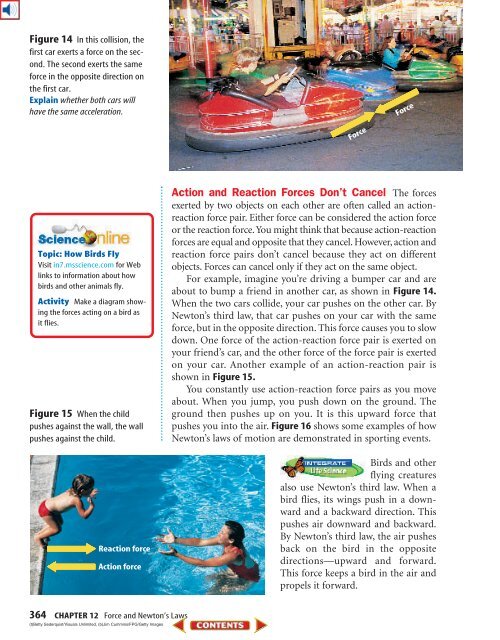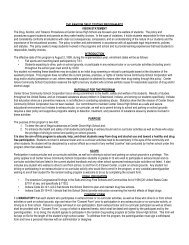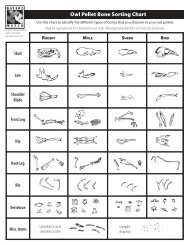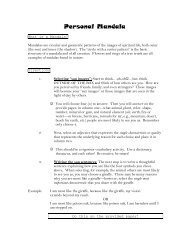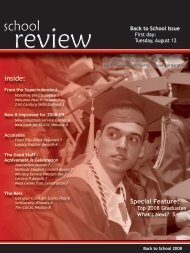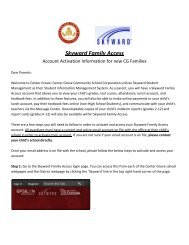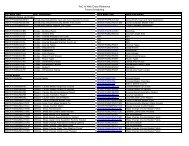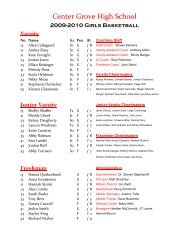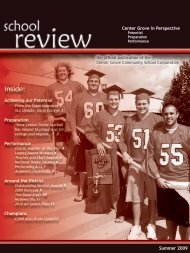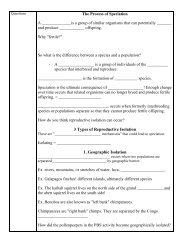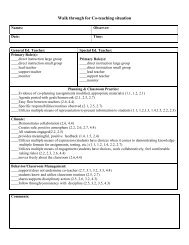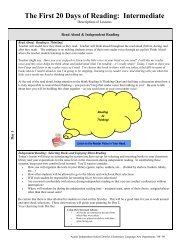Newton's Third Law
Newton's Third Law
Newton's Third Law
Create successful ePaper yourself
Turn your PDF publications into a flip-book with our unique Google optimized e-Paper software.
Figure 14 In this collision, the<br />
first car exerts a force on the second.<br />
The second exerts the same<br />
force in the opposite direction on<br />
the first car.<br />
Explain whether both cars will<br />
have the same acceleration.<br />
Force Force<br />
Topic: How Birds Fly<br />
Visit in7.msscience.com for Web<br />
links to information about how<br />
birds and other animals fly.<br />
Activity Make a diagram showing<br />
the forces acting on a bird as<br />
it flies.<br />
Figure 15 When the child<br />
pushes against the wall, the wall<br />
pushes against the child.<br />
Reaction force<br />
Action force<br />
Action and Reaction Forces Don’t Cancel The forces<br />
exerted by two objects on each other are often called an actionreaction<br />
force pair. Either force can be considered the action force<br />
or the reaction force. You might think that because action-reaction<br />
forces are equal and opposite that they cancel. However, action and<br />
reaction force pairs don’t cancel because they act on different<br />
objects. Forces can cancel only if they act on the same object.<br />
For example, imagine you’re driving a bumper car and are<br />
about to bump a friend in another car, as shown in Figure 14.<br />
When the two cars collide, your car pushes on the other car. By<br />
Newton’s third law, that car pushes on your car with the same<br />
force, but in the opposite direction. This force causes you to slow<br />
down. One force of the action-reaction force pair is exerted on<br />
your friend’s car, and the other force of the force pair is exerted<br />
on your car. Another example of an action-reaction pair is<br />
shown in Figure 15.<br />
You constantly use action-reaction force pairs as you move<br />
about. When you jump, you push down on the ground. The<br />
ground then pushes up on you. It is this upward force that<br />
pushes you into the air. Figure 16 shows some examples of how<br />
Newton’s laws of motion are demonstrated in sporting events.<br />
Birds and other<br />
flying creatures<br />
also use Newton’s third law. When a<br />
bird flies, its wings push in a downward<br />
and a backward direction. This<br />
pushes air downward and backward.<br />
By Newton’s third law, the air pushes<br />
back on the bird in the opposite<br />
directions—upward and forward.<br />
This force keeps a bird in the air and<br />
propels it forward.<br />
364 CHAPTER 12 Force and Newton’s <strong>Law</strong>s<br />
(t)Betty Sederquist/Visuals Unlimited, (b)Jim Cummins/FPG/Getty Images


